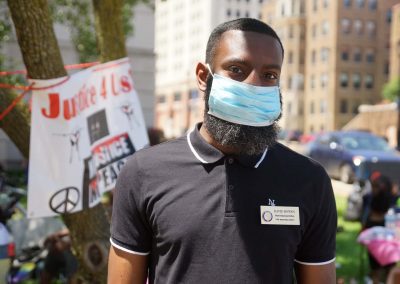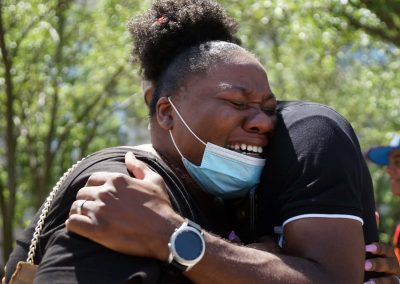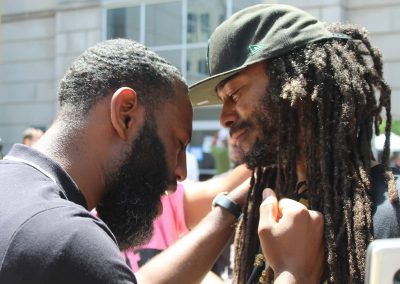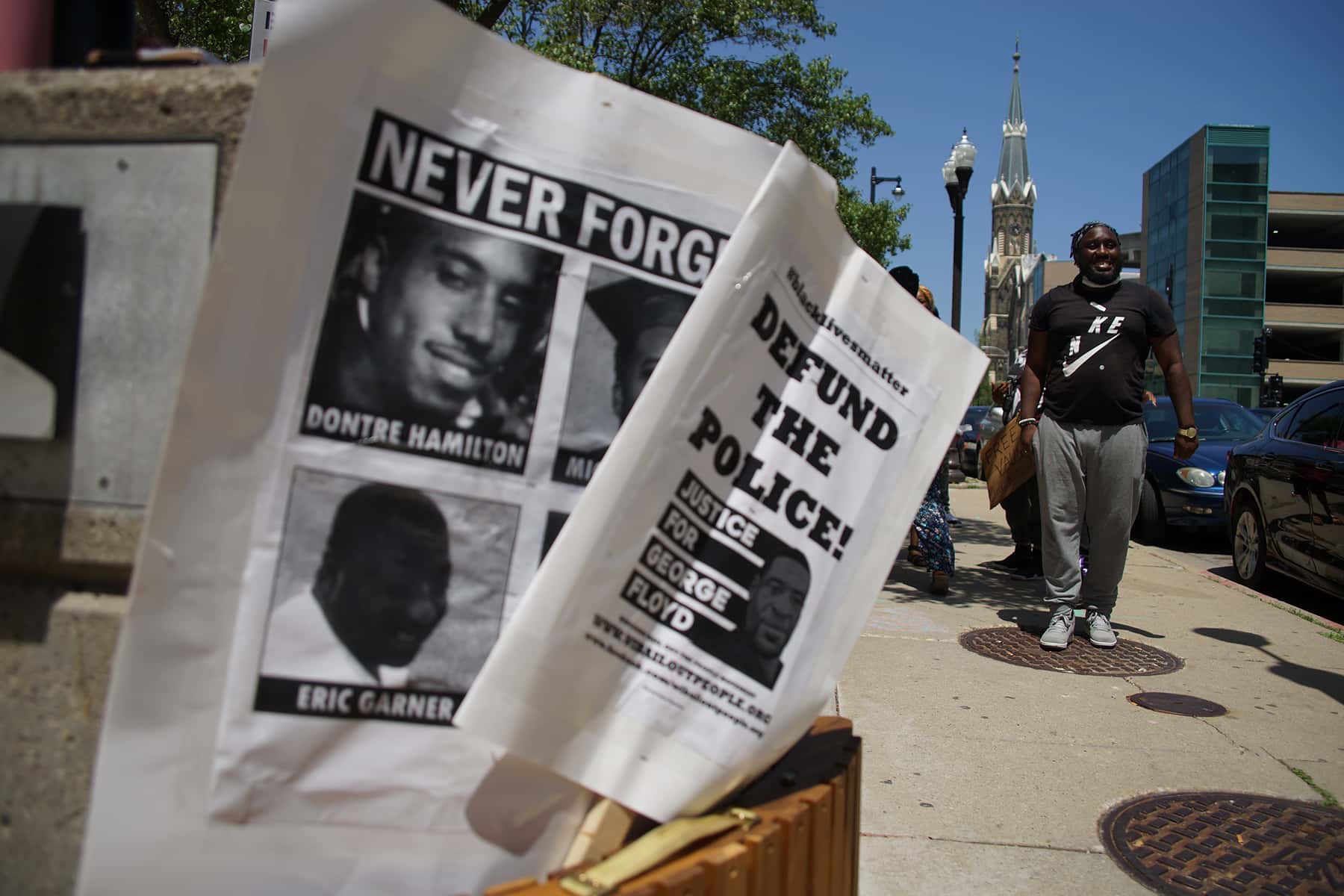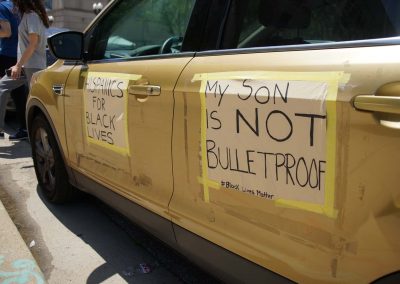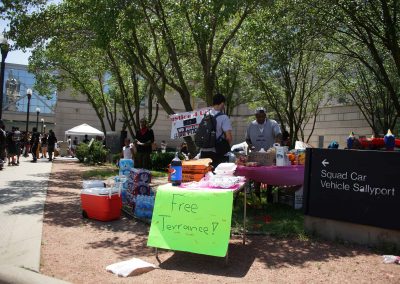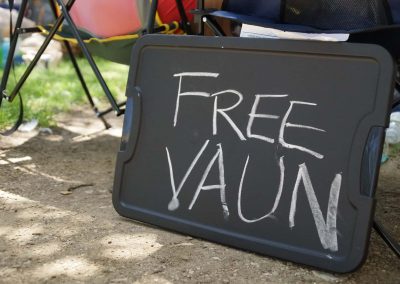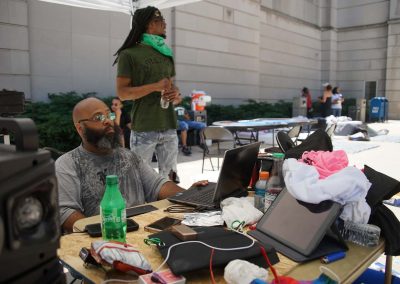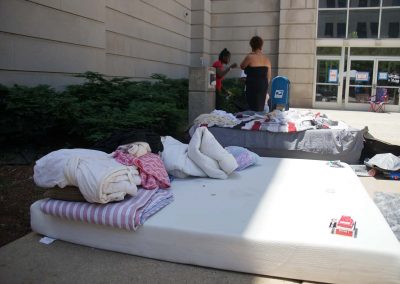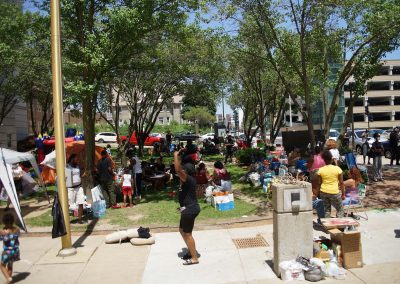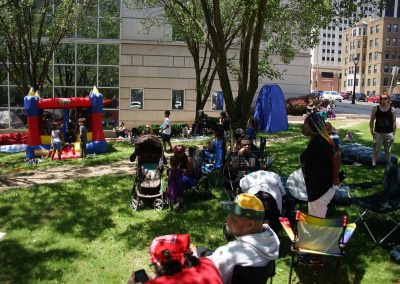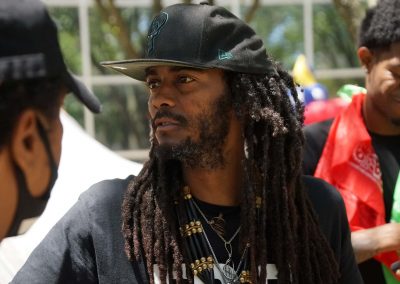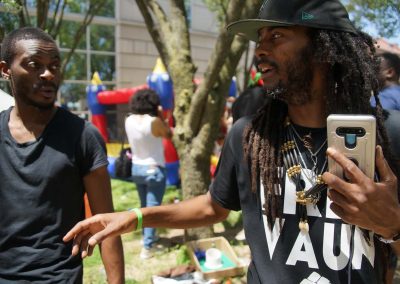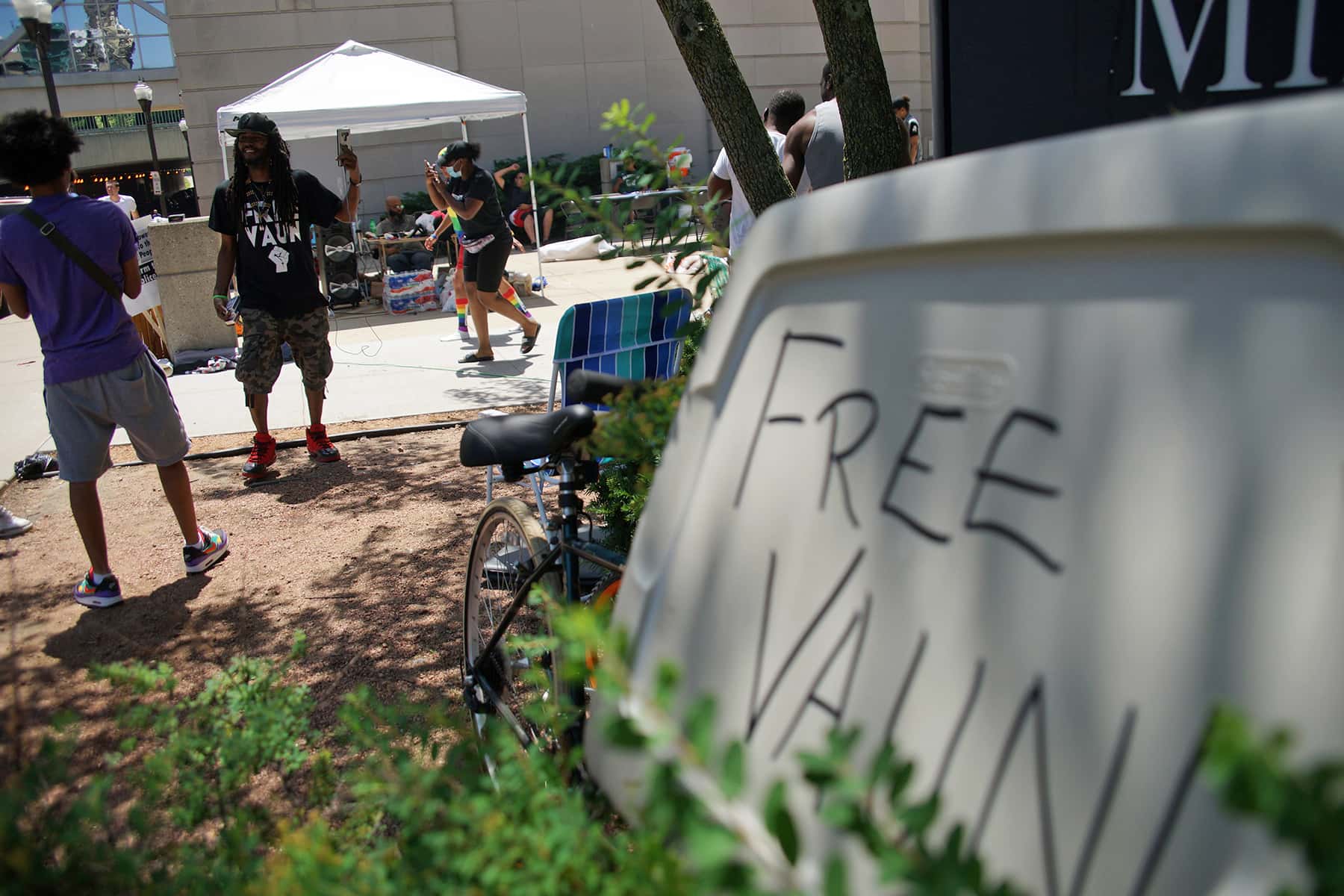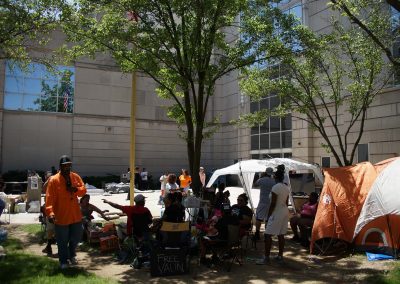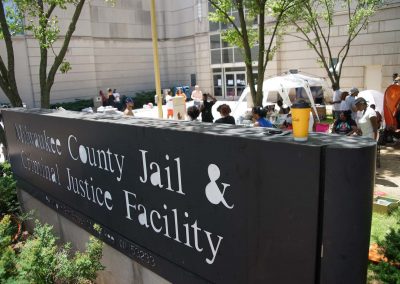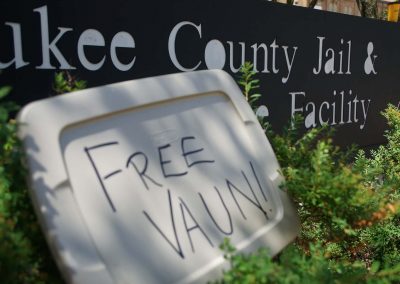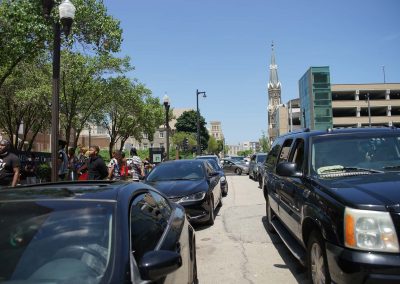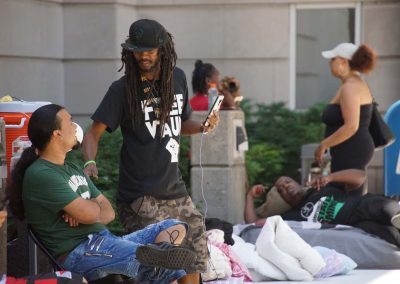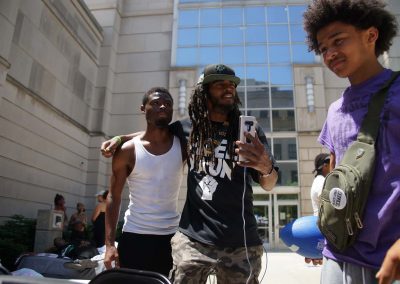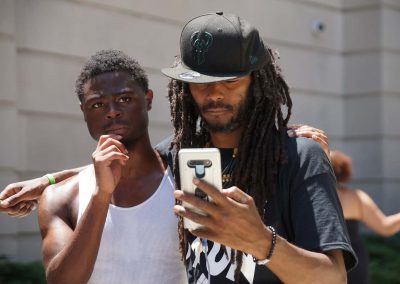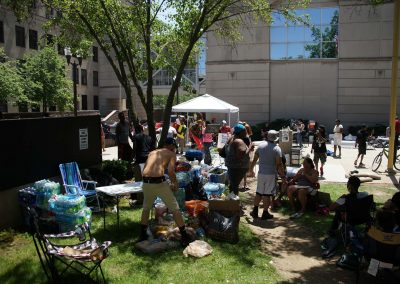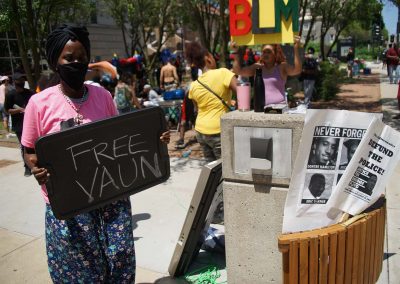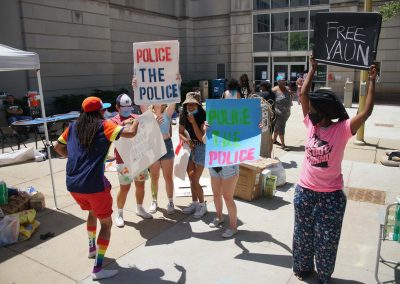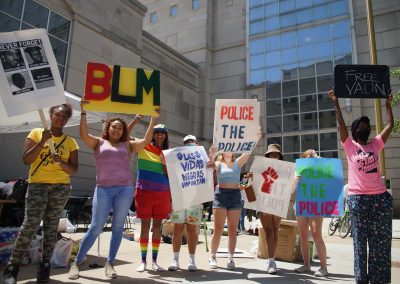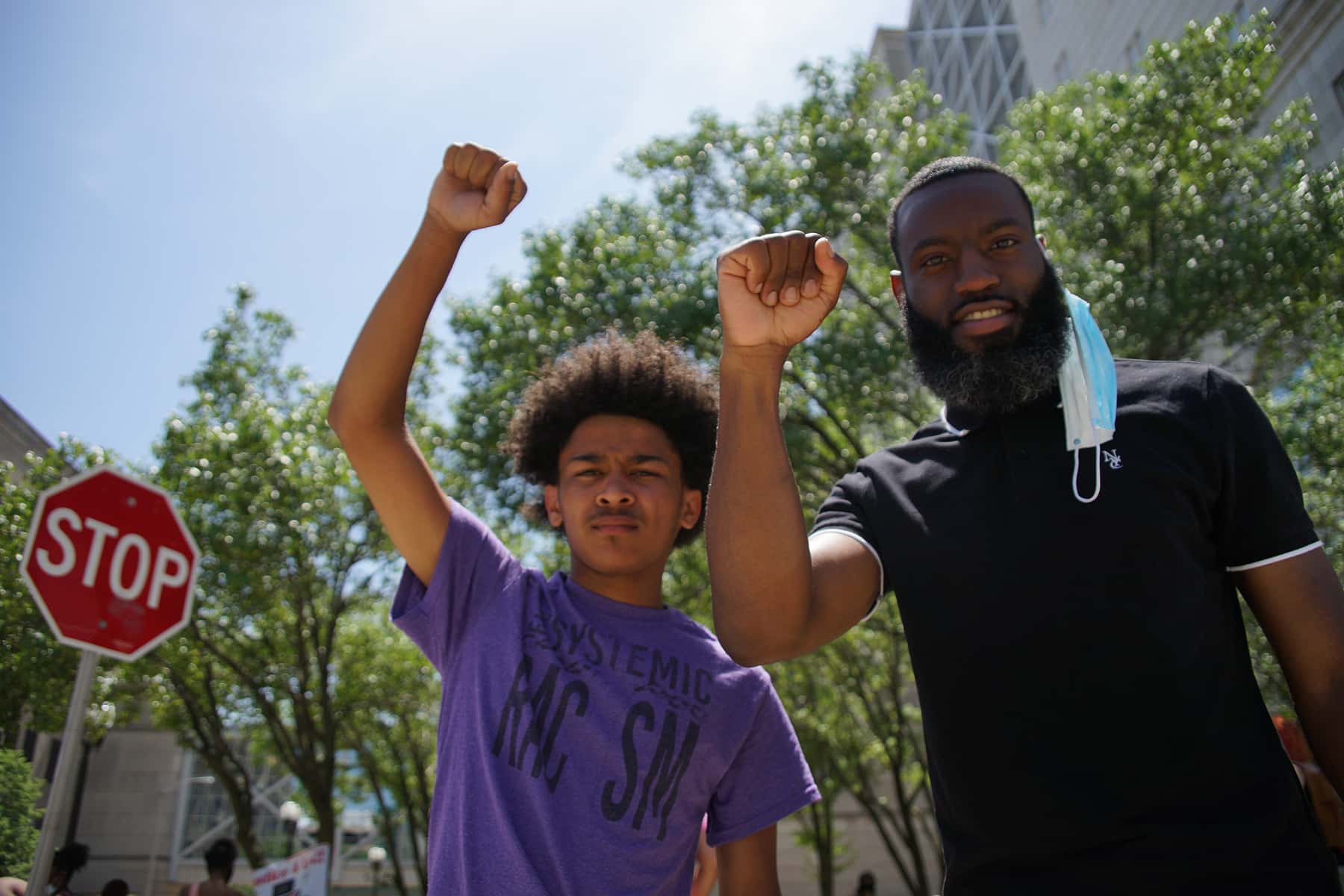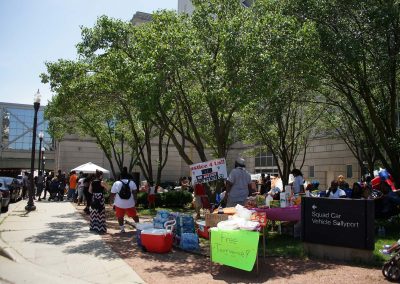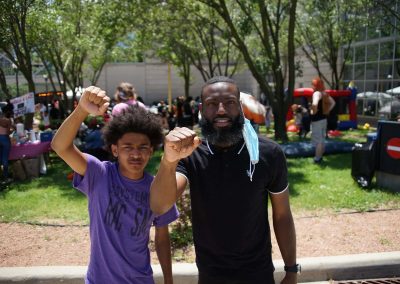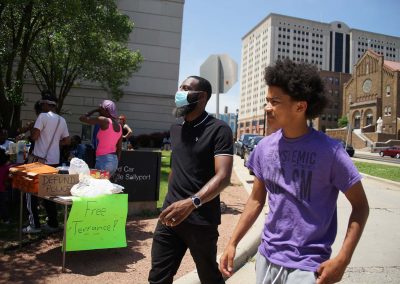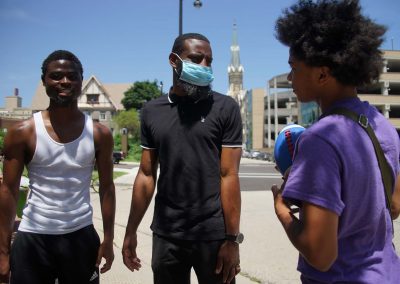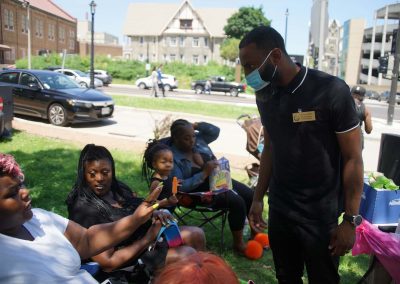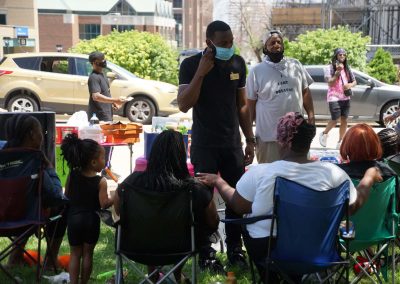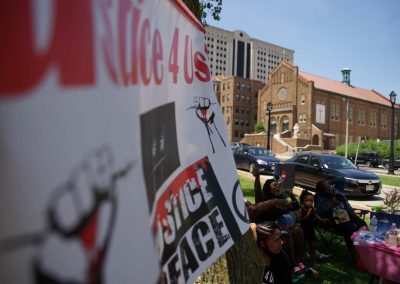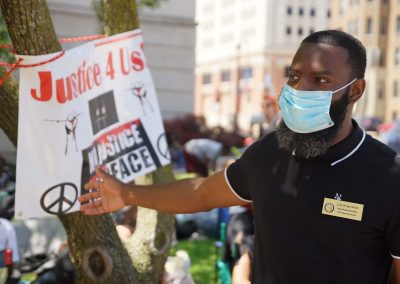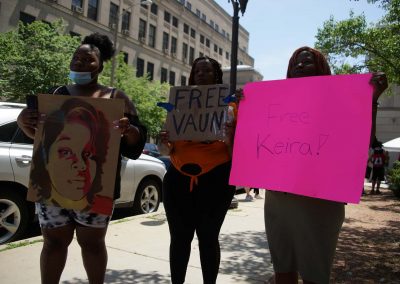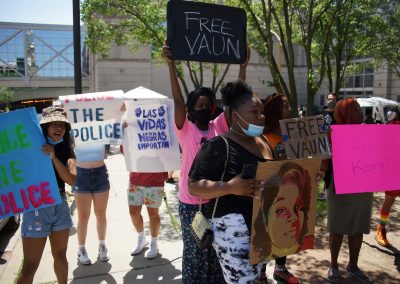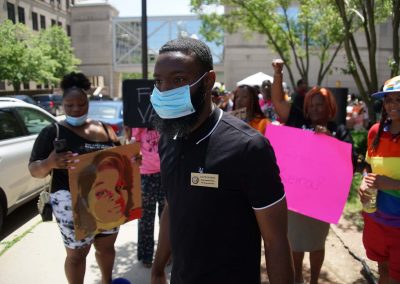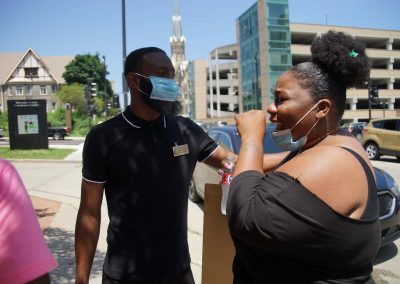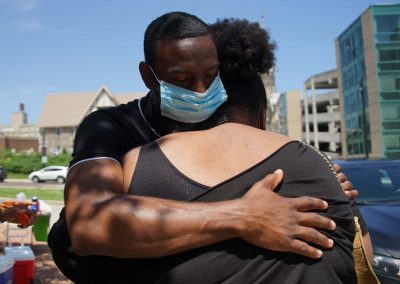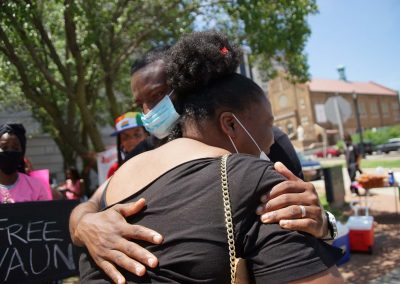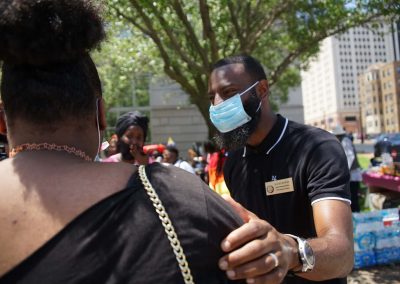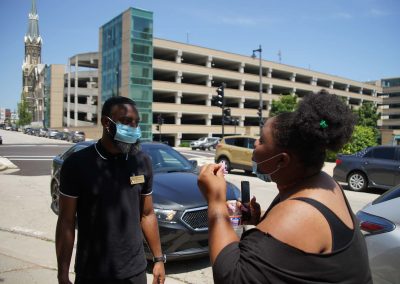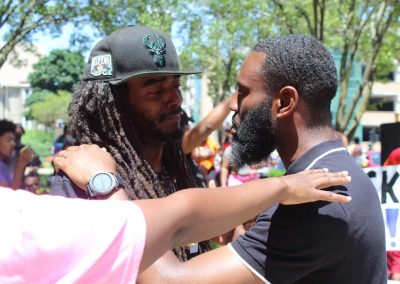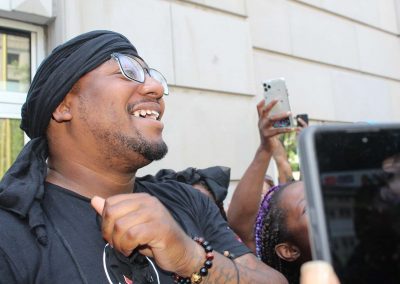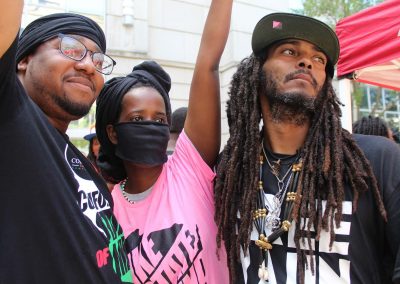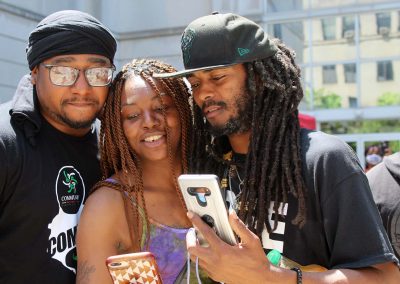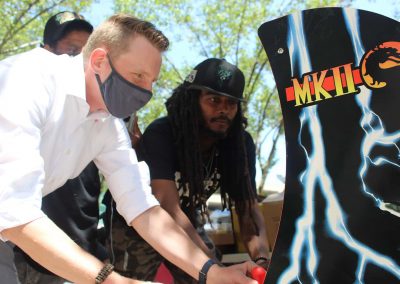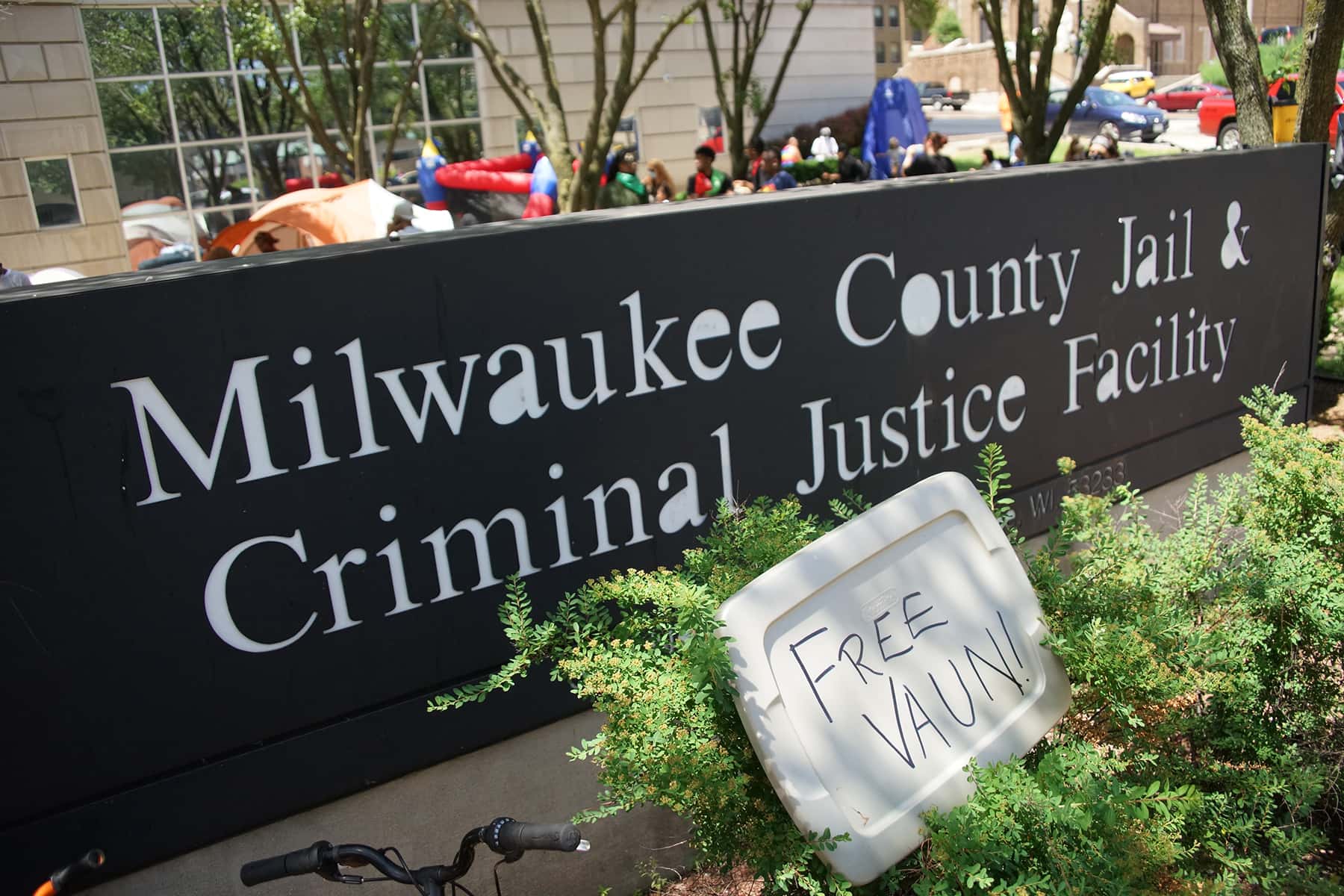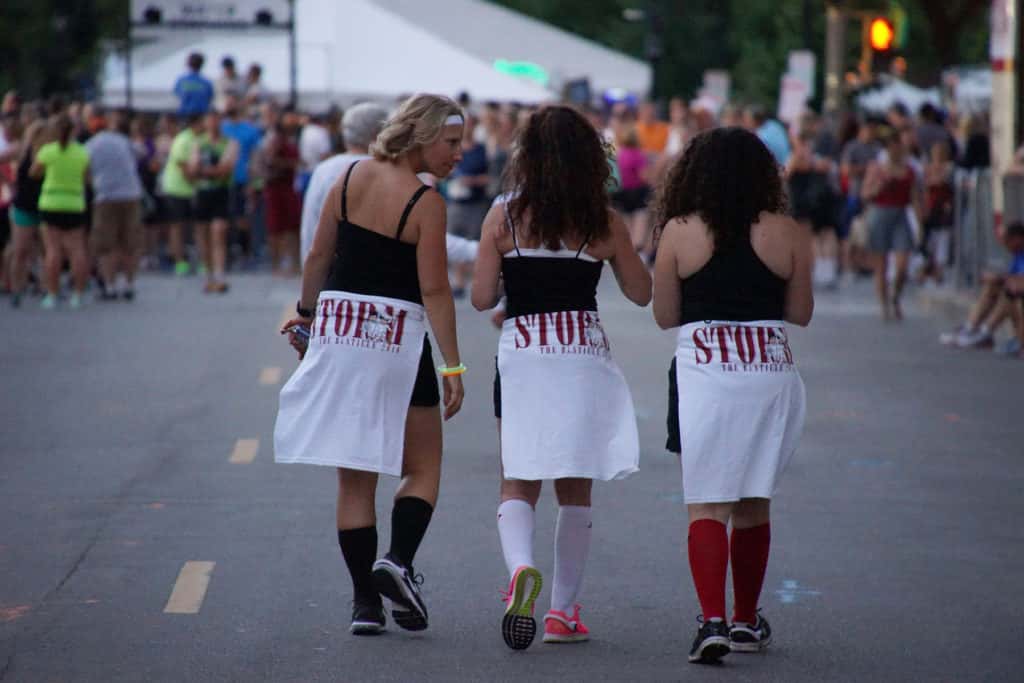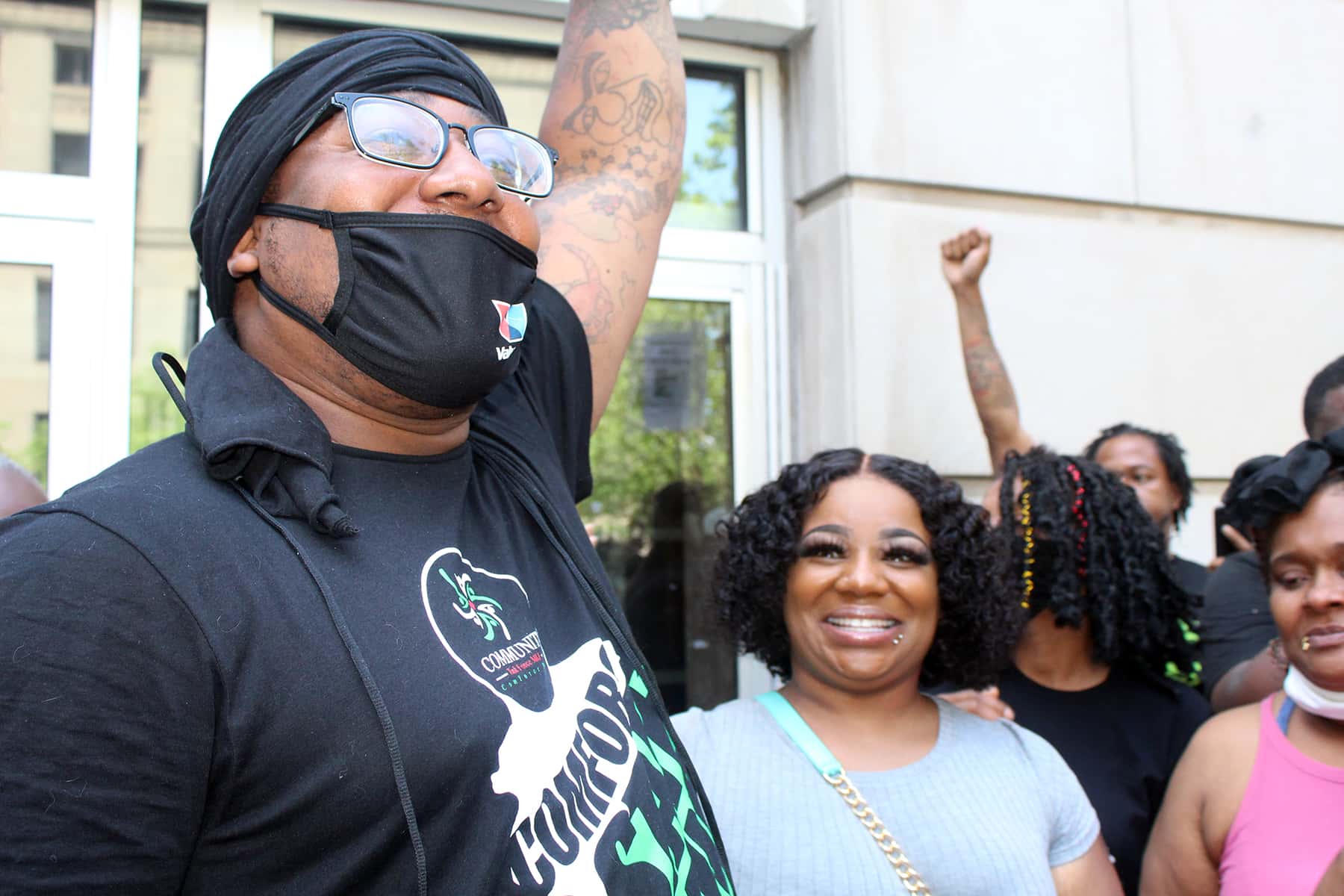
Milwaukee residents, thousands of whom have marched in the city’s 32 straight days of protest against police violence, were reeling after the arrest of local activist and co-founder of the Community Task Force (COMM Force) Vaun Mayes. Officers from the Milwaukee Police Department (MPD) pulled Mayes over as he livestreamed a protest on June 29, stating they had a warrant for his arrest.
Mayes has since been released, although questions linger over why exactly he was detained. Activists in Milwaukee and around the country are increasingly uneasy about surveillance and arrest by law enforcement.
Nevertheless, Milwaukee’s protesters continue marching. “This is a set up,” said 38-year-old community activist Gabriel Taylor on June 29, a friend of Mayes. “I knew this was [about to] happen, Vaun is not a danger to the community.” Distressed and worried, Taylor went to MPD’s downtown headquarters after Mayes’ arrest to get answers. A small group of protesters had arrived there first, however, and were already expressing their own discontent.
COMM Force did not organize the protest, Taylor said, but she attempted to respect the protesters’ right to demonstrate, while asking them not to do anything that could make Mayes’ situation worse. “I understand people want to support Vaun,” she said. “Vaun has a huge support base, Vaun is a value to this community. People want to come out, [but] they don’t necessarily know how to do it the proper way. People are upset, they know Vaun is a good person. They know that whatever this is, it’s not warranted.”
Mayes was last arrested in 2018, after federal agents charged him in relation to an alleged plot to firebomb an MPD station during unrest in Milwaukee in 2016. The search warrant used by agents who raided Mayes’ home included anything that could hold video like phones and flash drives.
After Mayes was held for 10 days, a judge determined that the government wasn’t able to prove that he was a danger to the community. Mayes has been free to live in his home and conduct community work since then, and his court date has been postponed several times.
An MPD spokesperson was unable to confirm what the warrant for Mayes’ arrest entailed, “due to the fact that he was not criminally charged in a case.” To find out more information about the arrest, Wisconsin Examiner was directed to go to the downtown headquarters. But MPD locked down the building and began turning most journalists away.
It was later reported that the MPD’s arrest blotter listed Mayes’ arrest as “burglary party to a crime.” Two hours later, MPD issued a press release stating that the police had arrested an unnamed “community activist for a felony charge.” The press release referenced an incident on June 23, when hundreds of residents surrounded a suspected sex trafficking house. The residents had gathered after allegations surfaced that two missing girls were seen at the house. Officers searched the dwelling and didn’t find the children, who were later found at a different location and who denied ever being at the house.
Mayes, activist Frank Nitty (Frank Sensabaugh), the director of the Office of Violence Prevention Reggie Moore and Rep. Jonathan Brostoff (D-Milwaukee), arrived after the crowd had already formed and attempted to de-escalate tensions. Residents entered the house attempting to find the girls, and riot-clad officers were called back to the scene and surrounded the dwelling.
Later the house was burned. Mayes was described by a witness to Wisconsin Examiner as trying to persuade the people who had entered the house to leave. The same witnesses said he extinguished some of the fires in the house in an effort to control the blaze.
In the days that followed, Mayes criticized MPD Chief Alfonso Morales and his department for their handling of the incident. COMM Force held its own press conferences on the issue of the missing children. Morales denounced the “unruly crowd” which he said participated in “vigilantism” at the house. He stated that seven of the officers on the scene were injured that day. The prevalence of human trafficking in Milwaukee has earned the city the unfortunate moniker the “Harvard of pimp schools.”
Targeting organizers and protesters
A record of Mayes could be found in the Milwaukee County inmate locator database with three unlisted pending charges. The agency which ordered that Mayes be detained is also not listed, although his bail appeared at $200. Activist Frank Nitty, who’s been a key figure in organizing Milwaukee’s marches, was there when Mayes was arrested. Calling Mayes “a brother,” Nitty told Wisconsin Examiner, “he’s going to be out soon, hopefully. If he’s not going to be out soon, we’re going to demand that he gets out.”
Nitty also livestreamed Mayes’ arrest. As he watched, Nitty became emotional on the stream describing what was happening. It wasn’t the first time Mayes had been confronted by police since the protests began. On June 5, Mayes was leaving a small protest in his car when he was pulled over by sheriff’s department personnel in an unmarked vehicle. He was issued citations for allegedly not wearing a seat belt, an improperly attached license registration and operating a vehicle without insurance. Although Mayes wasn’t arrested his car was seized and towed. Mayes reclaimed the car later, and continued attending protests despite these pressures.
Leading up to Mayes’ arrest, Nitty noticed that law enforcement were also keeping a close eye on him. The night before, Nitty said he was pulled over by Milwaukee police officers. Later on the day after Mayes was taken into custody, Nitty livestreamed as he was trailed by police vehicles on the highway. All of this, coupled with his own arrest in the movement’s early days, made Nitty feel the police were aggressively targeting protesters. Like Mayes, Nitty was released a day after being detained.
Nitty feels the pressure against protesters is escalating because real policy changes are happening as a result of the demonstrations. “That’s scary for some people that don’t want things to change,” he told Wisconsin Examiner.
Mayes released as protesters occupy Milwaukee County Jail
On June 30, a day after his arrest, as Mayes was released from the Milwaukee County Jail, dozens of protesters gathered outside celebrated by occupying the jail’s main entrance. The jail is part of a much larger complex which includes courts and MPD’s downtown headquarters. Protesters chanted “Free Vaun Mayes,” as sheriff’s vehicles blocked off streets and more marchers streamed in.
Once Mayes was free and roaming about the crowd, the demonstration turned into something more akin to a block party.
Sheriff’s department personnel no longer blocked off the streets, but still watched from a distance. Residents set up barbecue grills to feed the crowd, a flat screen television was set up to play video games, and tents appeared for an overnight stay. Some people were going to mark their second night sleeping out in front of the complex. Music blared as people danced and celebrated. Others mingled, or chalked elaborate art pieces and the names of their incarcerated loved ones on to the building’s flat, uniformly gray walls.
Mayes explained to Wisconsin Examiner that his arrest came after he and Nitty visited a recently finished mural depicting them and other activists. Shortly after he left, several MPD vehicles followed him, he said, “maybe four or five.”
Once in custody, Mayes said that both he and his attorney couldn’t get confirmed details on the warrant for his arrest, or if there were any charges filed. “They confiscated three phones,” he said, “and they still have my phones.” Mayes has as many questions as the residents now occupying the jail grounds. “I have to wait for my attorney to bring some validation, and give a statement,” he said.
Black identity extremists
Many point to a U.S. Department of Justice (DOJ) memo, created in August 2017, as evidence of renewed efforts by the government to target Black movements. The document details “Black Identity Extremists” which it stated are motivated by “perceptions of police brutality against African Americans.” It analyzes key events for the Black Lives Matter movement, like the Ferguson protests, while citing isolated acts of violence against police.
More recently, documents known as the “Blue Leaks” show law enforcement closely monitoring 2020’s BLM protests. The Intercept reports that the documents were obtained by the hacktavist collective Anonymous, and published by the website Distributed Denial of Secrets, and that the documents show “local and federal law enforcement agencies repeatedly told police in Minnesota that they were under attack. The fears stoked by the warnings appear to have set the stage for the police’s escalating, violent response to the protests.”
One document notes that police officers in Minnesota “made contact with individuals from Wisconsin,” noting that people from Milwaukee were pulled over in their cars as officers monitored traffic for out-of-state protesters headed to Minneapolis.
The documents were shared between several police intelligence units, including Fusion Centers. The Milwaukee police department has its own Fusion Division, which includes a Virtual Investigations Unit (VIU), created in June 2018, a month before Mayes was first arrested. MPD’s Fusion Division recently made local news, after it issued a handwritten ticket to protester Demetrius Griffin. The $691 ticket was issued to Griffin after he uploaded a video he’d taken during one of the night protests while the 9 p.m. curfew was in effect. All curfew tickets have since been dropped by the city.
Griffin had also been at the alleged sex trafficking house among the protesters who gathered on June 23. On June 26, Griffin was arrested by Milwaukee officers and charged with five felonies including making “terrorist threats” and fleeing an officer. Fellow protesters say that police arrived at Griffin’s house to arrest him in the days following the house burning. Griffin allegedly left to go to an unspecified emergency, and thought it would be a good idea to lead the police at his home to the incident so they could defuse it.
His bail was set at $25,000 on June 30. On July 1, however, the Sheriff’s Office announced that Griffin’s charges were dropped. He was released around 3:20 pm, on July 1. The jail occupation hadn’t ended with Mayes’ release. The encamped marchers had moved on to demanding that Griffin be released. Surely, another celebration on the jail grounds is due.
“You’ve never seen this before,” said Mayes with a smile, looking at the people celebrating outside the county jail. “It definitely is amazing … amazing to see this happen in this manner.”
Mayes believes that more activists will likely be targeted with arrest and surveillance. “Through the creation of Black Identity Extremists you’ve seen federal charges be brought up on different groups,” said Mayes. “There’s a clear targeting of people who are in this fight.”
Lee Matz and Francesca Guyton-Johnson, Guyton Photography
Originally published on the Wisconsin Examiner as Activist Vaun Mayes released from Milwaukee jail after arrest
Donate: Wisconsin Examiner
Help spread Wisconsin news, relentless reporting, unheard voices, and untold stories. Make a difference with a tax-deductible contribution to the Wisconsin Examiner


